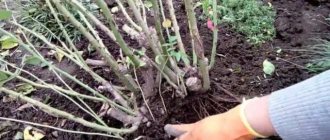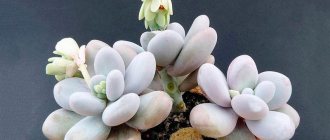Roses have long been considered a real decoration and the pearl of garden plots. Many admire her and call her the queen of the garden. Today, breeders have developed many different varieties of this crop, which have different bush shapes, heights, as well as the color and shape of the inflorescences.
On the shelves of garden stores you can see countless decorative and miniature Patio roses in pots. They are represented by small border flowers that can be easily grown both in open ground and at home.
Roses Patio: general information
Patio roses were brought to Europe in the 19th century from their homeland, China. They were crossed with floribunda roses. They are also called Miniflora, but this name did not take root in Europe. The mother plant is considered to be a hybrid tea rose.
The description in its current form says that Patio roses are a variety of low-growing bush roses of the Rosaceae family of the floribunda group. The foliage is dense, dark green. They differ in their size - 70 cm in height, some specimens grow only 30-50 cm. When flowering, the bush is strewn with buds, which can be double or semi-double, grow in inflorescences or singly. The flowers have a pleasant aroma and a variety of colors in white, pink, red, yellow or orange.
Patio at its best
Patios are grown in pots or cache-pots to decorate the home, and they are also used to decorate mixborders.
History of appearance
The appearance of this plant was preceded by a number of discoveries in the field of breeding. In the second half of the 20th century, floribunda roses were developed. They differed in that the buds and flowers were collected in clusters. Among the floribunda roses, a group of dwarf roses stood out, but at that time they did not have a separate name. It was not until 1980 that a name for this group was proposed. The word "patio" in Spanish means an internal courtyard of a living space, fenced on all sides. Patios are usually small, cozy and beautifully decorated with flowers. It was this word that gave the name to a new type of flower. Photos of patio roses are posted later in the article.
Varieties of indoor plants
- Korsnoda
Border roses - what kind of variety are they?
The bush is compact, maximum size is 60 cm in height. The flowers are double, white and cream in color. Flowering is long and abundant.
- Rose spray Macarena
The bush is compact, the inflorescences are large. The foliage is glossy. The blooming flowers are rosette-shaped and light yellow in color with a brighter center. Over time they acquire a pink tint.
- Pink Flash
Winter-hardy species. Bush 50-60 cm high. Feature: marble color. The flowers are pink in color; the petals have light pink stripes, which change color to a richer pink in the cold.
Use in landscape design
- Typhoon
Bush up to 70 cm. The flowers are small, the color is red with shades of orange. More often grown in pots than in open ground.
- Patio hit
The bushes are compact, 30-40 cm in height. The flowers are semi-double or double, lush, of different colors.
Rose Patio Hit, which is easy to care for at home, is perhaps the most popular variety of Patio in Russia. Moreover, both experienced flower lovers and beginners are trying to grow it.
This is interesting! Those who are new to the flower often make mistakes and write the name together as rose Patiohit, which is incorrect.
Types, varieties
Each Mix variety has its own characteristics, but they are all equally suitable for indoor growing.
This is interesting: How to prune roses after flowering in the summer so that they bloom again
Mini mix
It differs from its peers in color by being the lowest bush, it barely reaches 10-15 cm; many roses of medium and small size fall into this category. The flowers on its low stems look like large caps.
Parade mix
It is considered the most popular variety of roses grown on a windowsill, as it is better adapted to indoor conditions than others. Its flowering can occur in any month, and it lasts up to six months; sometimes 6 buds can bloom on one bush at once.
After abundant flowering, the plant requires a break, which can last up to 2 months, this is how long it will take for the formation of new buds. The bush grows up to 40-45 cm, the flowers bloom on it are medium-sized, but they are of the most varied colors, they resemble a tea rose. The most striking representative of this species is the “Star” variety.
Cordana mix
A miniature variety, reaching a height of no more than 30 cm. It is bred only as a houseplant; with rare exceptions, in the summer it can be planted in the garden for a while, but dug up again for the winter.
The bushes grow and become very lush, the flowers on them are small and have only 4 colors: light pink, white, red and yellow. Flowering begins in spring and ends in autumn. They have absolutely no aroma, so they are suitable for people prone to allergic reactions.
It is worth noting that this variety is capricious and will be difficult for an inexperienced gardener to grow.
Beau Monde mix
An excellent purchase for those who love numerous white roses blooming on their snow-white windowsill; this variety has only one color, which, depending on the lighting, can acquire a pink tint.
Roses Patio: care at home
Rose El Toro - what kind of variety is it?
Roses tolerate drought well. They need a lot of sun, but not in excess. It is advisable for the rose to be in the sun in the first half of the day.
Water the plant as the soil dries. It is advisable to do this rarely, but in large quantities.
The soil is preferably slightly acidic. Fertilizer is applied 3-4 times a year: in the spring - nitrogen, in the summer - phosphorus and potassium.
The size of the pot depends on the variety. Basically, it is required that the container be 30-35 cm deep - this will be enough for the Patio.
Bud close up
Dry or broken stems are trimmed and infected ones are also removed. During flowering, it is necessary to cut off faded buds.
In the first year, it is better not to let the plant bloom until it has become stronger and accustomed to the new conditions.
If you buy a ready-planted bush, it should be transplanted into a suitable container along with a lump of earth, being careful not to injure the roots.
Important! You cannot replant during flowering.
Neat rose bush in a pot
What to do after purchase?
Before sale, the Mix rose is placed in a peat substrate. This soil retains moisture for a long time, which reduces the need to care for the plant in the store. But such soil is not suitable for long-term cultivation. Therefore, after purchase, it is important to replant the crop.
Start the event when the rose has acclimatized to your conditions. Typically this takes 10–12 days. At this time, water the flower regularly, preventing the soil from drying out. And don’t forget to spray the foliage periodically.
Planting Patio roses in open ground
The variety can be grown both in a pot on a windowsill and in open ground.
Rose Jazz - characteristics of the varietal shrub
Planting on the site is carried out in the spring, when warm weather is favorable for flower growth.
Choose strong seedlings - each should have several leaves and roots.
Important! If the selected seedling already has buds and flowers, they need to be cut off before planting.
You can treat the seedling with a fungicide to prevent fungal diseases and stimulate growth.
Step-by-step landing instructions:
- Dig a hole 20-30 cm in diameter.
- 10 cm of humus is poured into the bottom of the hole.
- When planting a seedling, carefully straighten its roots and cover them with soil, lightly compacting them. The base of the stem after burying should go slightly into the ground.
- The planted seedling must be watered abundantly.
Choose a place that is sunny, but not too sunny: roses love the sun, but too much of it leads to burns. Attention is also drawn to drafts - there should not be any.
The ideal soil is slightly acidic loam. If the soil is different, it needs to be improved - add clay and sand mixed in equal proportions.
Moderate watering is required. A lack of moisture leads to lethargy of the bush, an excess can cause rotting of the roots. It is advisable to water the plant rarely, but abundantly, since the main roots of the plant go deep underground. The owner of a rose bush needs to focus on drying out the soil.
Important! Water the seedlings frequently and abundantly until they take root.
Fertilizer is applied only in the second year of growth. In spring, when leaves are actively growing and buds are forming, nitrogen fertilizers are suitable. But only in spring and summer do they use phosphorus and potassium fertilizers. In total, fertilizing is carried out 3-4 times a year. Complex mineral fertilizers from the store are suitable for these purposes.
Trim the plant in the spring - remove broken and dry stems. In summer, drying branches and faded buds are removed.
At the end of flowering, all stems are cut off - even those that did not produce buds. Before cold weather, the bush is checked for the presence of infected parts: they are removed. The bush itself can be trimmed to the shape necessary for convenient shelter for the winter. Before frost, the rose bush is covered with spruce branches.
Planting a rose bush in the ground
Transfer
Transplanting a plant When purchasing young mixed rose seedlings or when filling the entire volume of the pot with roots, caring for it consists of replanting it in a new container.
It is best to do it in the autumn, during the waxing phase of the moon. It is important to choose the right soil composition. It should be nutritious, consist of 1 part sand, 4 parts humus, 4 parts turf with the addition of complex fertilizer. If you cannot prepare the required components yourself at home, you can purchase ready-made soil. A new pot is taken with a diameter larger than the previous one by 2-4 cm, and in height by 5-7 cm. Expanded clay pebbles are placed on the bottom in a layer of 1 cm or 3 cm - if there is no drain hole. Next, a portion of the soil, previously mixed with pieces of moss and fertilizer, is poured in, and the rest is poured on top.
Transplanting a mini rose is done using the transshipment method and requires caution. It is advisable not to disturb the roots. Water the plant when the entire earthen lump is thoroughly moistened, and pull it out of the pot entirely. The soil with particles of fertilizers should not be removed from the roots.
After planting the plant in a new place of residence, the soil is slightly compacted. It should stay well in the ground. Leave 2-3 cm of free space to the edge of the pot so that nutrient soil can be added there. After transplantation, the rose is not watered, but only the foliage is sprayed.
How a rose from the Patio variety blooms
Roses blooming is always an event. Dwarf roses have their own characteristics during this period.
Rose Patio is distinguished by long, abundant flowering - sometimes until frost. During flowering, flowers appear both singly and in inflorescences.
For roses, a dormant period is important so that the plant can rest and recover. At this time, the leaves begin to turn yellow and growth slows down. If the plant is in a pot, it needs to be placed in a cooler place.
Important! When kept in a heated apartment on a windowsill, a period of rest cannot be arranged. The only way out is a glass balcony. To prevent the soil from freezing, the pots are placed in boxes with sawdust.
The buds of the Patio rose are similar to those of the hybrid tea rose, which is considered the mother plant in this chain.
There are three types of flowers:
- simple;
- terry;
- semi-double.
Important! In some species, flowers become flat towards the end of flowering.
The flowers are lush, maximum diameter is 9 cm, and have a pleasant aroma.
Roses blooming on the site
Accommodation requirements
Patio rose prefers cool temperatures and does not tolerate heat and stuffiness. Therefore, in summer it can be placed on the balcony or veranda. This plant loves light, but it is strictly undesirable to allow it to be exposed to direct sunlight. Leaves may get burned, begin to turn yellow and fall off.
Drafts are no less dangerous for her. If the rose is kept on a window, then in cool and cold weather it is necessary to insulate the windows so that the plant does not freeze. It is better to place the rose on a southwest or southeast window.
During months when daylight hours are short, a fluorescent lamp can be used to provide the desired level of illumination.
Flower propagation methods
Patio propagates in two ways:
- cuttings;
- grafting a shoot onto a rose hip.
Reproduction by cuttings
Cuttings are cut at any time of the year. It is believed that cuttings taken in summer take root best. If they are immediately planted in open ground, then they are first placed in water until the first roots appear. If harvested on the eve of winter, the cuttings are wrapped in peat and paper and stored in the refrigerator or cellar.
Reproduction by grafting a shoot onto a rose hip
I advise you to take a frost-resistant rosehip variety, at least 3 years old.
Shoots 5 cm long are cut from the middle part of the rose bush. Important conditions are the presence of buds and well-peeling bark.
The rootstock of the rose is rosehip. The plant is dug up, the stems are shortened to 20 cm and stored in a cool place until spring. Before the procedure, he is examined for the presence of diseases. If there are any, the plant is treated with a solution of clay mash.
Cuttings in the ground
Vaccination can be carried out in the summer, but it is better in the spring. You will need a rose cutting and a rosehip rootstock, on which 2 oblique cuts are made. In this cut, the rose cutting is fixed using grafting tape or strips of fabric. The blanks are placed in boxes.
For quick results, boxes with blanks are placed in a room with high humidity and a temperature of 15-20 degrees. The fusion of the slices will begin in 2 weeks. 3 weeks after planting, the boxes are moved to a warmer place. The rose cutting and rose hip root completely grow together in 1-1.5 months. Then the fixing tapes are removed and the seedlings are planted in open ground.
Important! The seedlings are covered with film on top to create a greenhouse effect and to protect them from the scorching rays of the sun. They'll take it off in a couple of weeks.
Lighting
Rosa Mix is a light-loving plant. But the beauty is harmed by direct rays of the sun, so it is better to grow it near an eastern or western window. On the northern windowsill, the crop will not have enough light, and it will drop its buds and foliage. If you grow a flower near a south window, be sure to shade the foliage during the midday hours. Otherwise, the plant will get burned, which will affect its health and decorativeness.
Growing problems, diseases and pests
What diseases can attack roses?
- powdery mildew;
- rust;
- rot;
- leaf spotting.
Pests may appear:
- spider mite;
- aphid;
- leaf roller
For prevention in the spring, the plant is treated with fungicides or a solution of copper sulfate.
Diseased or infected plants are treated with special preparations: Fitoverm, Karbofos, Hom, Topaz. It is also possible to treat with wood ash or horsetail decoction.
Patio roses are not dwarf varieties, but with their miniature beauty they can decorate any garden as a reward for regular care. Flowers look especially beautiful on the windowsill, surprising random witnesses. Caring for the Patio is not too difficult, so lovers of indoor and garden plants should definitely pay attention to this variety.
Rest period
During the cold season, the rose enters a so-called dormant period. Flowering ends and some of the leaves fall off. During this period, it is advisable to provide the patio rose with a comfortable winter. To do this you will need:
- Transfer the plant to a cool room, preferably with a temperature no higher than +15 degrees.
- Reduce watering, spraying and fertilizing.
- Be sure to trim the plant, shortening the length of the branches by about a third.
If you correctly follow all the recommendations for maintaining and caring for a patio rose, including instructions regarding wintering, then in the spring the plant will delight the owner with rapid growth and the appearance of a large number of buds.
Landing
It is recommended to plant seedlings in open ground in early spring. Before planting, it is recommended to soak the root system, if it is open, in water for two to three hours.
For planting, it is recommended to choose a sunny and open area. The hole should be about 45 cm in depth and in diameter so that there is room for the root system in it. At the bottom of the hole it is necessary to make a drainage layer: small pebbles (pebbles, expanded clay or broken brick) are placed at the very bottom, and a little sand is sprinkled on top.
It is recommended to put organic fertilizers on top of the drainage. You can use dry leaves, grass or rotten wood. It’s a good idea to put a little manure at the bottom of the hole.
The seedling is planted in a hole and covered with the top layer of soil. The soil is well compacted around it.
It is recommended to make a small depression for water next to the rose bush. After the plant has been planted, it needs to be watered. One plant requires about 8 liters of water. For irrigation, you need to take warm water that has been heated by the rays of the sun. It is advisable to use rainwater. When using tap water, it is recommended to let it sit for a few days so that all the chlorine is released.
Caring for patio roses is easy, both at home and in the garden. How to care in the garden and at home?
Location
It is recommended to grow the crop in a bright place, be it a window, balcony or open ground. In garden areas, direct sunlight is not dangerous for roses. However, if it has been growing at home for a long time, then before moving the plant into the garden, the flower will need adaptation to the rays of the sun. This also applies to newly purchased flowers.
To prevent sunburn at midday, when the sun is too bright, it is advisable to protect the plant from the rays. To prevent the root system from being damaged by overheating, the pot can be placed in a large, light-colored pot, or wrapped in white paper.
It is necessary to regularly ventilate the room. In a dark place, the patio rose will develop poorly and slowly, and may also refuse to bloom.
Watering and humidity
Watering the crop is required regularly. It should be moderate. It is not recommended to allow the soil to dry completely between waterings; only a slight drying of the top layer of soil is allowed.
Stagnant water is also dangerous for roses. It can lead to rotting of the root system, so you should not overwater the plant. In addition, a drainage layer is needed in the soil or at the bottom of the pot.
Spraying is allowed, but not in direct sunlight. This procedure will help you endure the heat and heat. However, excessive spraying can lead to the development of fungus.
Feeding
Fertilizing must be done throughout the spring and summer season. They are also allowed in winter, but only if there is additional lighting.
Special fertilizers for roses are used as fertilizing. These can be purchased at flower shops. It is better to fertilize frequently, but in small portions. This will improve absorption and prevent oversaturation of the soil.
It is not recommended to start feeding the plant immediately after purchase. It is better to start fertilizing after 3 months. This is due to the fact that the roses sold are already well enriched with special long-acting fertilizers. And additional application will cause soil salinization.
Wintering in the garden and indoors
For the winter, some dig up the plant and move it indoors for the winter, while others leave the patio rose to overwinter in the garden. At the same time, it needs to be covered with spruce branches. A wire frame is placed around the bush, which should be several centimeters higher than the bush itself. Polyethylene material and film are placed on it. Starting from mid-spring, the plants need to be ventilated, and soon the insulation is completely removed.
Since in winter the rose often lacks natural light, the use of artificial lighting lamps is recommended. In this case, the air temperature should be about 20 degrees. However, if such conditions cannot be ensured, then the plant can be sent to winter. Wintering can be deep or shallow.
For shallow sleep, the plant needs to provide a temperature no higher than 15 degrees. And for deep sleep, the temperature is lowered to 5 degrees. However, it is necessary to lower the temperature gradually. In deep sleep, the rose sheds its leaves, and the lack of light no longer frightens it.
Pests
The plant is often affected by spider mites. It can be detected by a whitish coating in the form of a cobweb on the leaves. It must be combated with the help of insecticidal agents (Aktara, Aktellik, Fitoverm and others).
Landing
- Choose areas that are well lit and open, but shaded in the afternoon. Climbing roses love plenty of light and fresh air and do not tolerate drafts. It is strictly forbidden to plant in the corners of buildings.
- Plant roses in the spring so that they have time to take root well and become stronger before the onset of cold weather.
- Maintain proper spacing when planting multiple plants. Between the rows it should be at least 1-2 meters, and between the bushes - 0.5 - 1.0 meters. Retreat from the support at least 35 - 0.5 meters.
- Deepen the root collar by at least 10 cm. This will allow the rose to develop its own roots and prevent the roots of the rootstock from developing.
It is necessary to plant a rose in the spring so that it has time to take root well and become stronger before the onset of cold weather.
- Prepare a hole several weeks before planting (50 x 50 cm). Add peat, humus and lime to it.
- Before planting, fill the hole with a mixture of soil and cow manure. If the soil is acidic, add dolomite flour.
- Shorten shoots and roots to 20–30 cm to form a strong root system. Sprinkle the roots at the cut sites with ash, and treat the branches with garden varnish.
- Place the seedling in the hole, straighten the roots, pointing them down, cover with soil mixture, compact the soil.
- Water the seedling well, allow the water to soak in and the soil to settle.
- Fill the soil to the required level.
- Mulch the tree trunk circle.











